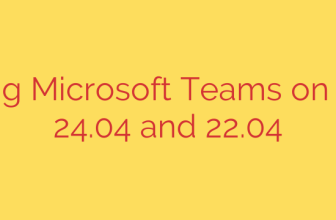
Beyond Penetration Testing: A Safer Approach to Industrial System Security
In the world of industrial operations, the phrase “if it isn’t broken, don’t fix it” has long been the guiding principle. The immense risk associated with downtime or malfunction in Operational Technology (OT) and Industrial Control Systems (ICS) means that security testing is often seen as a dangerous liability. Traditional IT penetration testing, which actively tries to break things, is simply too hazardous for a power plant, manufacturing floor, or water treatment facility.
But in an era of increasing cyber threats targeting critical infrastructure, inaction is no longer an option. A new, safer methodology is emerging that allows organizations to test their resilience without risking catastrophic failure: deliberate, controlled industrial system disruption.
The Problem with Traditional Security Testing in OT Environments
For years, cybersecurity professionals have relied on penetration testing to find vulnerabilities. While effective in corporate IT networks, this approach is fundamentally incompatible with the high-stakes world of OT.
The potential consequences of a failed test in an industrial setting are severe:
- Operational Downtime: Halting production can lead to millions in financial losses.
- Equipment Damage: Improper commands can destroy sensitive and expensive machinery.
- Environmental Incidents: A system failure could result in spills or other environmental hazards.
- Human Safety Risks: In the worst-case scenario, a compromised control system can lead to injury or loss of life.
Because of these risks, many industrial facilities operate with a hands-off approach to security validation, relying on theoretical exercises and hoping their defenses hold. This passive stance leaves them blind to hidden weaknesses in their people, processes, and technology.
What is Deliberate Industrial System Disruption?
Contrary to how it sounds, deliberate disruption is not about reckless hacking. It is a methodical, carefully planned, and entirely safe engineering exercise designed to test a system’s response to failure.
Think of it as a fire drill for your control systems. You don’t actually start a fire, but you simulate the conditions of one to ensure alarms work, evacuation routes are clear, and emergency responders act correctly.
In the same way, a deliberate disruption event simulates a specific failure—like a loss of network visibility, a faulty sensor reading, or a non-responsive controller—in a controlled environment. The goal is not to break the system, but to observe how the entire operation responds to the adversity. This includes automated safety protocols, monitoring and alarm systems, and the actions taken by human operators.
How a Controlled Disruption Event Works
Implementing a deliberate disruption program is a multi-stage process that prioritizes safety above all else.
- Identify and Isolate: A critical but non-catastrophic process is chosen for the test. The team identifies all potential impacts and establishes firm boundaries to ensure the disruption cannot spread to other parts of the facility.
- Formulate a Hypothesis: The team creates a specific “what if” scenario. For example: “If Sensor X provides a false reading that is 30% above the normal operating limit, will the automated safety valve engage and will the operator follow the correct emergency procedure within 60 seconds?”
- Design the Test: Engineers and security experts design the safest possible way to simulate the failure. This might involve using a signal manipulator to feed false data to a controller or temporarily disconnecting a redundant network link. The test never involves compromising a live system with malicious code.
- Execute and Observe: With all safety personnel on standby, the test is executed. The team meticulously documents the system’s technical response and the procedural actions taken by the staff.
- Analyze and Improve: The results are analyzed to identify weaknesses. Did the alarm fail to trigger? Did the operator hesitate or make a mistake? Was the documentation unclear? These findings are then used to implement concrete improvements to technology, training, and emergency protocols.
The Key Benefits of This Proactive Approach
Adopting a strategy of deliberate disruption offers profound advantages over traditional, passive security measures.
- Uncover Unknown Weaknesses: It reveals hidden vulnerabilities in the complex interplay between people, processes, and technology that a simple vulnerability scan could never find.
- Validate Safety and Response Plans: It provides concrete proof that your safety-instrumented systems and emergency response plans will actually work as designed during a real crisis.
- Enhance Operator Training: There is no substitute for hands-on experience. Controlled disruptions provide operators with invaluable, low-risk training for high-stress scenarios.
- Build True Operational Resilience: The ultimate goal is not just to prevent cyberattacks but to build a system that can withstand any type of failure, whether it’s a technical glitch, a human error, or a malicious attack.
Actionable Steps to Get Started
For organizations looking to move toward a more resilient security posture, here are some actionable tips:
- Start Small: Begin with a low-impact, well-understood system to prove the concept and build confidence.
- Assemble a Cross-Functional Team: Involve OT engineers, IT security staff, plant operators, and management from the very beginning. This process requires a blend of expertise.
- Prioritize Safety Above All: Every step of the process must be governed by a safety-first mindset. If a test cannot be proven to be safe, it should not be performed.
- Document Everything: Thorough documentation of the plan, execution, and results is critical for learning and demonstrating value to leadership.
By embracing deliberate disruption, industrial organizations can finally move from a passive, hopeful security posture to an active, evidence-based one. It is a powerful method for hardening critical infrastructure against a growing landscape of threats, ensuring not just cybersecurity, but fundamental operational safety and resilience.
Source: https://www.helpnetsecurity.com/2025/10/15/industrial-control-system-simulation-cybersecurity/








